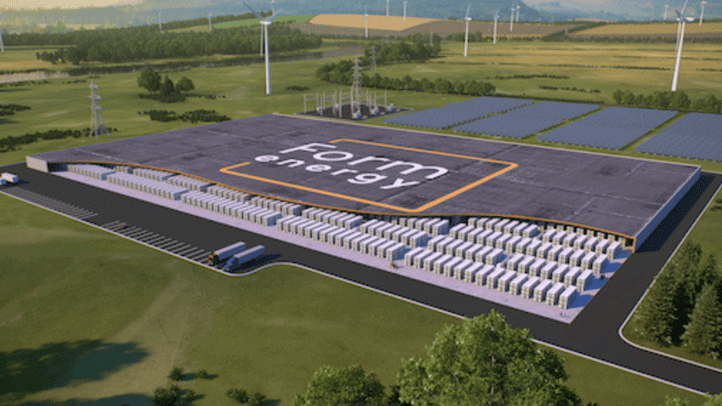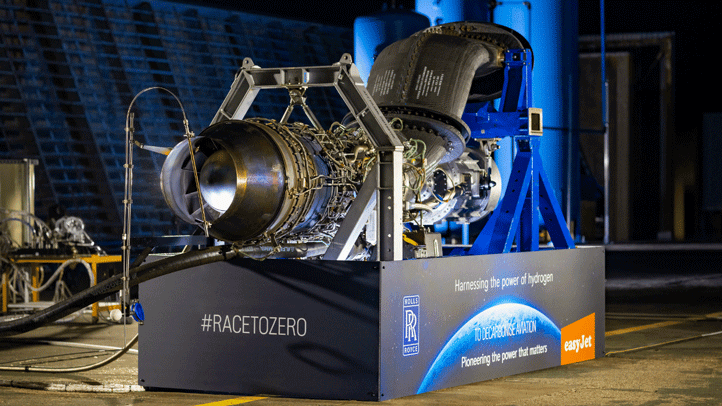Register for free and continue reading
Join our growing army of changemakers and get unlimited access to our premium content

At the founding of edie in 1998, the UK’s first commercial offshore wind farm was still five years away. 25 years later, renewables have doubtless been the biggest success story for green innovation, with electric vehicles (EVs) a close second. But as the need to limit harmful emissions has intensified, other technologies are beginning to pick up pace.
Here, we track innovation so far in five key areas – renewable energy, energy storage, clean transport, agriculture and plastics. We also take a look forward to the next 25 years of green innovation. Read on to find out more.
Renewable energy
Solar and wind energy are expected to account for more than 90% of the renewable power capacity that will be added in the next five years.
These two energy sources have grown exponentially over the past two and a half decades. In 1998, the total installed capacity of all the world’s wind turbines was under 10GW. By 2021, this figure had reached 825GW. Meanwhile, solar energy has undergone an even more meteoric rise, with total installed capacity increasing from 0.3GW to 843GWin the same period.
Both technologies continue to develop. For wind energy, there are plans for floating vertical axis wind turbines (pictured) and bladeless rooftop wind turbines for commercial buildings. And companies such as Sweden’s Midsummer are making solar panels that are not only more sustainable to manufacture, but also blend into the aesthetic of a home.
Elsewhere, several previously considered energy sources are getting a second look. In 1973, University of Edinburgh engineer Stephen Salter developed a highly efficient wave power converter. This project’s funding was cut in the 1980s, but today innovators such as UK startup Mocean are revisiting the concept.
Similarly, in the 2000s, Norwegian company Statkraft experimented with osmotic energy, a technology that uses a membrane to harness the power of osmosis where salt and freshwater meet. This programme was discontinued in 2013, but breakthroughs in nanotechnology have allowed French startup Sweetch Energy to re-assess the potential of osmotic power.
Energy storage
The amount of energy generated by intermittent sources (wind and solar) has increased from 16.7TWh in 1998 to 2,888TWh in 2021. As these sources only produce energy when the wind is blowing and the sun is shining, this has resulted in a massive increase in the demand for energy storage.
Batteries get a lot of hype, but pumped hydro accounted for 90% of total global electricity storage in 2021. While this technology is well established, it continues to develop. For example, UK startup RheEnergise is deploying a pumped hydro system that uses a high-tech fluid instead of water. As this mineral-rich fluid is two and a half times denser than water, the new system can be used on hills that are two-and-a-half times smaller, reducing costs.
However, it is battery technology that has been the most significant growth area over the past decade, with the capacity of all the world’s grid-scale battery systems increasing from 2GW to 16GW between 2016 and 2021.
Today, lithium iron phosphate batteries are the preferred technology for grid-scale battery storage. But extracting lithium is environmentally damaging, and the global supply chain for lithium looks strained in the face of growing demand. In response, companies such as Cornwall’s British Lithium, are looking at ways to extract the element using new and more sustainable processes. Meanwhile, other innovators are exploring battery technologies that use more abundant materials. Form Energy, for example, is developing a battery farm (pictured) that uses iron-air technology.
Beyond batteries, innovators are working on other methods of energy storage. Cheesecake Energy, for example, has developed a system that stores energy using heat and compressed air.
Clean transport
In 2013, there were only 400,000 electric cars around the world, but by 2021 there were more than 16.5 million.
As more and more EVs hit the road, the need for effective charging infrastructure grows. In October 2022, researchers at Penn State University, in partnership with startup EC Power, published a paper that could pave the way for 10-minute charge times for a typical EV battery.
Beyond cars, there is an increasing focus on decarbonising heavy vehicles. For example, UK company Tevva is on the cusp of entering mass production for its 7.5-tonne battery-electric truck. Meanwhile, US-based Amogy is successfully testing the world’s first ammonia-powered semi-truck earlier this year.
While the transition to emission-free road transport is well underway, shipping and aviation are the emerging latest frontier for clean transportation. They are doubtless more challenging to decarbonise than road transport, with several technologies emerging at once.
In the shipping industry, US startup Fleetzero has plans to convert container ships to battery power, and Amogy is in the process of building the world’s first ammonia-powered ship. Other innovators are focused on efficiency gains, such as French startup Airseas, which has tested a kite-like parafoil to help ships save fuel.
In aviation, Rolls-Royce and easyJet performed the world’s first run of a modern jet engine on hydrogen in November 2022 (pictured). Two months prior to that, electric aircraft manufacturer Eviation announced the maiden test flight of its small all-electric passenger jet. Nonetheless, a 2023 report from the Royal Society concluded that all the main alternative fuel options for aviation face challenges, and that the sector will need to take a holistic approach to innovation.
Agriculture
By 2050, the world will need to produce 60% more food to end hunger and feed a larger population. Production increases will need to come at the same time as the sector dramatically reduces emissions, water use and forest conversion while also turning the dial on food waste across the value chain.
And one potential solution is vertical farming – where crops are grown in vertically stacked layers in closely controlled environments. This approach claims big savings in land and water use, although researchers have raised questions about its substantial energy demands.
Over the past decade, there has been a race to commercialise the technology. Last year, US vertical farming startup Plenty (pictured) reached total funding of just shy of $1bn. Meanwhile, the world’s largest vertical indoor farm – which will produce fish and microgreens in a circular production system – is due to open its doors this year.
The massive increase in agricultural output in the 20th century was closely linked to the use of synthetic fertilisers. But the production and use of these fertilisers contribute significantly to global greenhouse gas emissions and causes other environmental challenges such as nutrient pollution.
As a result, innovators are exploring alternative ways of boosting yields. For example, Argentinian company Puna Bio is treating seeds with extremophile bacteria that absorb nutrients from the soil extremely efficiently. And Czech startup Nitroterra is also turning to bacteria to replace synthetic fertilisers with bio-fertilisers produced on-site at farms.
Plastics
Although there has been much focus on recycling over the past 25 years, there is an increasing realisation that recycling rates are not keeping up with plastic production. Only 9% of all plastics ever produced have been recycled.
In response, innovators are exploring alternative materials for packaging. For example, UK startup Notpla is one of several startups testing the potential of seaweed for packaging (pictured).
Others are ensuring that common plastic alternatives, such as paper, are in fact fully plastic free, with no plastic-derived films or coatings. France’s Papkot, for example, has developed a ceramic coating that gives paper the same packaging properties as plastic, without using any plastic at all.
Beyond alternative materials, one innovation that is clearly gaining momentum is reusable packaging. For example, startups such as Ozarka in the Netherlands and ReCircle in Switzerland are developing models for reusable packaging in the takeaway food market, while retail brands, such as Ecover, and retailers, such as Abel & Cole, are giving consumers the option to buy products in refillable containers.
The world in 2048
Looking at the past 25 years of green innovation begs the question: ‘what will the next 25 years look like?’ There is certainly plenty more work for innovators to do. And the recent AR6 Synthesis Report from the Intergovernmental Panel on Climate Change highlighted carbon capture and storage, energy conservation and efficiency, and greater integration across the energy system as key focus areas.
There are already signs that carbon capture and storage will take off over the next 25 years. Today, there are around 35 commercial carbon capture, utilisation, and storage facilities attached to industrial facilities, but there are roughly 300 projects in the development pipeline.
Meanwhile, it’s crucial that the scramble to build out grid-scale energy storage doesn’t result in a new form environmental degradation. Advanced recycling technologies, new and cleaner methods of resource extraction, and whole new ways of storing energy will all be needed to avoid this outcome – as will technologies to build flexibility into energy systems.
Finally, when it comes to energy efficiency, it is essential that innovators not only make existing industrial processes less energy-intensive, but that the expected explosion in artificial intelligence, with its attendant demands for energy-consuming processing power, doesn’t derail our efforts in other sectors.
The challenges may be great, but the past 25 years of green innovation have demonstrated that progress is possible.
This article was produced by edie’s innovation partner Springwise, an intelligence platform focusing on innovation that matters to the planet. Each startup mentioned in this piece can be found on Springwise.com, along with many more from around the world and across industries.







Please login or Register to leave a comment.